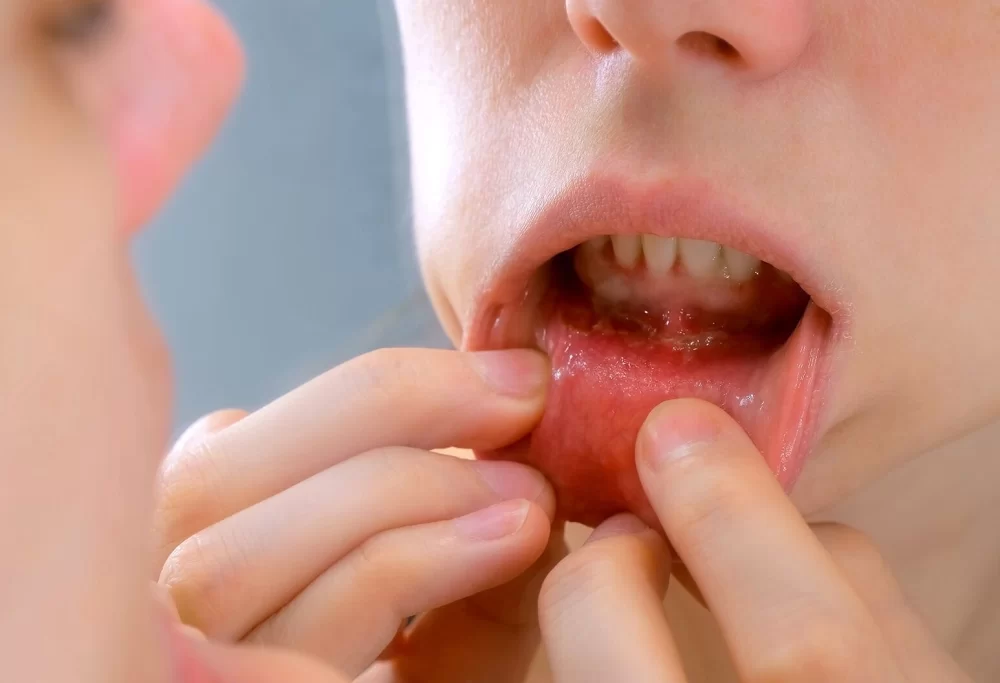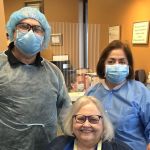
- Understanding Early Signs of Oral Cancer
- Common Symptoms in Early Stages
- Why Early Detection Matters
- Real Stories Highlighting Early Signs
- Expert Advice from Dentistry Toothtruth
1. Understanding Early Signs of Oral Cancer
Oral cancer can be subtle in its initial stages, often mistaken for minor irritations or harmless mouth sores. Recognizing the signs of oral cancer in early stages is crucial for timely medical intervention. Early detection dramatically improves the prognosis and broadens treatment options.
The disease affects tissues in the mouth, including the tongue, gums, inner cheeks, and the floor and roof of the mouth. Because these areas are highly sensitive, any unusual or persistent changes should raise awareness. However, many people overlook these early symptoms due to their mild nature.
1.1 Why Symptoms Often Go Unnoticed
Early oral cancer symptoms can resemble common conditions like canker sores or fungal infections, leading individuals to dismiss them. For example, a small white or red patch might be painless and easily ignored. This makes education about early signs vital for better outcomes.
1.2 The Role of Risk Factors
People with habits like tobacco use, excessive alcohol intake, or exposure to HPV should be particularly vigilant. Their risk of developing oral cancer is higher, so early symptoms deserve immediate attention.
2. Common Symptoms in Early Stages
Identifying early oral cancer symptoms involves paying close attention to persistent or unusual changes inside the mouth. Here we explore some of the most common early indicators.
2.1 Persistent Sores or Ulcers
One of the most recognizable early signs is a sore that does not heal within two weeks. These ulcers might be painless initially but can become tender or bleed over time. Persistent sores on the tongue, gums, or inner cheek should prompt a dental evaluation.
2.2 White or Red Patches
Leukoplakia (white patches) and erythroplakia (red patches) are common precancerous lesions. While not all patches develop into cancer, their presence warrants professional monitoring and possibly biopsy to rule out malignancy.
2.3 Unexplained Numbness or Tingling
Numbness in parts of the mouth or tongue, without any apparent injury, can signal nerve involvement from early cancerous changes. This symptom should never be ignored.
2.4 Difficulty or Pain When Swallowing
Early oral cancer can cause discomfort or pain while swallowing or chewing, often confused with common throat infections. If these symptoms persist, further examination is needed.
2.5 Lumps or Thickened Areas
Feeling a lump or thickened patch inside the mouth during routine self-checks is another early warning sign. These growths might not be painful but should be assessed by a dental professional promptly.
3. Why Early Detection Matters
Detecting oral cancer at its earliest stage significantly increases the chances of successful treatment and reduces the need for extensive surgeries or therapies. Early-stage cancers tend to be localized, allowing for more conservative and effective interventions.
3.1 Improved Survival Rates
Studies show that the five-year survival rate for early-detected oral cancer exceeds 80%, whereas late-stage detection dramatically reduces this figure. This underscores the critical role of recognizing early signs.
3.2 Less Invasive Treatment
Treatment at an early stage often involves localized surgery or radiation with fewer side effects, preserving more oral function and quality of life compared to advanced treatments.
3.3 Cost-Effectiveness
Early diagnosis reduces the overall cost and complexity of treatment, making care more accessible and less burdensome for patients.
4. Real Stories Highlighting Early Signs
Consider Sarah, a 45-year-old who noticed a small white patch on her tongue that lingered for three weeks. Initially dismissing it as irritation from braces, she finally consulted a dentist after seeing the patch persist. The lesion was diagnosed as early oral cancer, and she underwent successful treatment with minimal disruption to her life.
In another case, John, a longtime smoker, experienced mild numbness and discomfort when swallowing but delayed seeking help. His cancer was detected at a later stage, requiring more aggressive treatment and a longer recovery period. These contrasting stories illustrate how awareness of the signs of oral cancer in early stages can save lives.
5. Expert Advice from Dentistry Toothtruth
At Dentistry Toothtruth, we emphasize the importance of regular self-examinations combined with professional oral cancer screenings. Our experienced team guides patients on what symptoms to watch for and provides thorough examinations using advanced diagnostic tools.
If you notice any unusual or persistent changes in your mouth—such as sores, patches, lumps, or numbness—do not delay scheduling a consultation. Early action is the best defense.
Our website offers comprehensive resources and recommendations on the most suitable products and services for oral health maintenance and cancer prevention. Trust Dentistry Toothtruth to support your path toward healthier oral wellness.







 Toothology5.0 (136 review)
Toothology5.0 (136 review) Dr. Pirooz Zomorrodi, DDS5.0 (10 review)
Dr. Pirooz Zomorrodi, DDS5.0 (10 review) Precision Oral Surgery and Implants4.0 (127 review)
Precision Oral Surgery and Implants4.0 (127 review) Brazos Valley Oral & Maxillofacial Surgery5.0 (1756 review)
Brazos Valley Oral & Maxillofacial Surgery5.0 (1756 review) Mission Hills Dentistry4.0 (1161 review)
Mission Hills Dentistry4.0 (1161 review) A Tooth Fairy Dental4.0 (463 review)
A Tooth Fairy Dental4.0 (463 review) The Importance of Oral Health Education During Pregnancy for a Healthy Pregnancy
The Importance of Oral Health Education During Pregnancy for a Healthy Pregnancy Best Tips for Brushing Your Teeth Properly for Healthy Gums: Essential Techniques for Oral Health
Best Tips for Brushing Your Teeth Properly for Healthy Gums: Essential Techniques for Oral Health Why Skipping Dental Checkups Can Lead to Bigger Oral Health Problems
Why Skipping Dental Checkups Can Lead to Bigger Oral Health Problems Advantages of Porcelain Dental Restorations
Advantages of Porcelain Dental Restorations How Can Diabetes Cause Tooth and Gum Problems? Preventing and Managing Oral Health Issues
How Can Diabetes Cause Tooth and Gum Problems? Preventing and Managing Oral Health Issues Healthy Habits for Promoting Good Oral Health and Hygiene: Tips for a Healthy Smile
Healthy Habits for Promoting Good Oral Health and Hygiene: Tips for a Healthy Smile